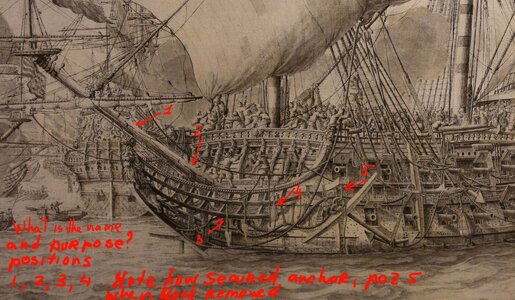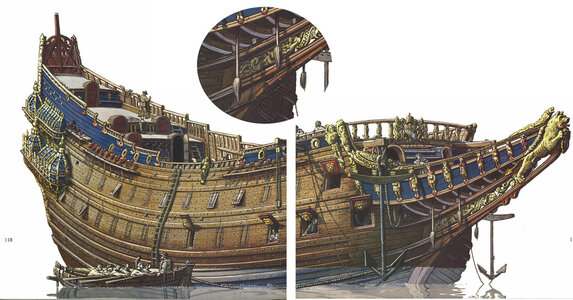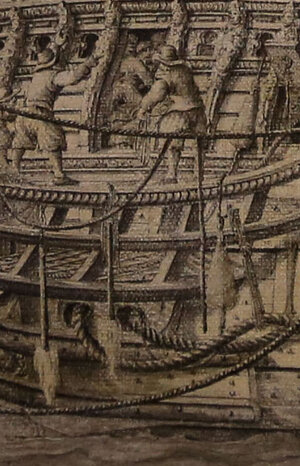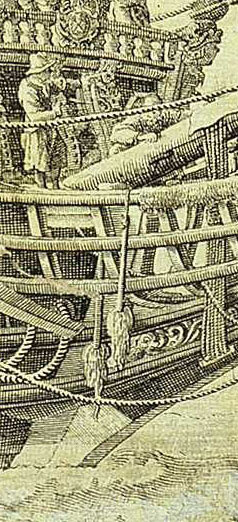Good day Dear Matt,
there are some more eye catching details which are repeatedly shown on pictures of many 17th century Dutch vessels and on some contemporaneous 17th famous models as well- I took this Eendracht 1653 just as good example of such details.
Dear Ab,
Could You Please advise and give some comments about purpose and materials / which are they made from - poz 2,3,4... these strange stuff looks like mops? Or serie of small bouys?
and how they were secured to the bowsprit- poz 2?
One more question, anchor bouy...what are material and colors?
Was it used to be painted in contrast colors in that time or not... ? something like white strips?
on the colored( 17th cntr) pictures these bouys always shown in some plain brownish colors, but on Van de Velde drawing we could see them as painted in some contrast colors?
Please advise.
Ps
pos 1 pls don't count... pointed by mistake,there is bowline block and rope....

there are some more eye catching details which are repeatedly shown on pictures of many 17th century Dutch vessels and on some contemporaneous 17th famous models as well- I took this Eendracht 1653 just as good example of such details.
Dear Ab,
Could You Please advise and give some comments about purpose and materials / which are they made from - poz 2,3,4... these strange stuff looks like mops? Or serie of small bouys?
and how they were secured to the bowsprit- poz 2?
One more question, anchor bouy...what are material and colors?
Was it used to be painted in contrast colors in that time or not... ? something like white strips?
on the colored( 17th cntr) pictures these bouys always shown in some plain brownish colors, but on Van de Velde drawing we could see them as painted in some contrast colors?
Please advise.
Ps
pos 1 pls don't count... pointed by mistake,there is bowline block and rope....

Last edited:









